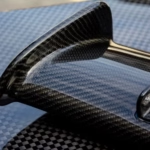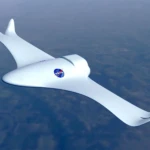Unlocking accuracy: Unlocking the mystery of CNC machining centers in modern manufacturing
In the bustling world of modern production, complex metal components are all functions from aerospace miracles to life-saving medical devices, a refined powerhouse ruler Supreme: CNC machining center. It is not only a machine, but also the cornerstone of precision manufacturing, which transforms digital blueprints into tangible, high-precision parts with excellent efficiency. Understanding CNC machining centers is crucial if you are involved in engineering, product development, or purchasing custom components.
What exactly is a CNC machining center?
The CNC (Computer Numerical Control) machining center is an automated multi-axis milling machine. It utilizes computer programs to control the precise movement of cutting tools to remove materials and create complex shapes with solid blocks of materials (called artifacts). Unlike basic manual milling machines, machining centers provide closed workspaces, automatic tool changers (ATCs), and the usual coolant system – enabling them to run complex part programs with minimal manual intervention after setup.
Think of it as a robot sculptor, meticulously carved metal, plastic or composite material, based on the exact digital description. This digital heart is a CNC program (usually a G-code) that determines the tool path, spindle speed, feed rate and tool changes, ensuring consistency and repeatability that cannot be matched manually.
Computer room: How does the CNC machining center operate?
- Digital Blueprint: The process begins with a 3D CAD (Computer Aided Design) model of the required part.
- Cam Programming: Using CAM (Computer Aided Manufacturing) software, engineers convert CAD models into a set of precise machine instructions (G codes). This defines each movement of the cutting tool relative to the workpiece.
- Artifact settings: Clam the raw materials firmly on the machine’s labor equipment (vills, fixtures or pallets).
- tool: The required cutting tools are loaded into the machine’s automatic tool changer magazine.
- Automatic execution: The operator starts the program. CNC controller takes over:
- Position the workpiece through the mobile station or pallet of the machine.
- Select the correct tool from the magazine and load it onto the spindle.
- Rotate the tool to high RPM.
- The tool is moved accurately along the programming path (X, Y, Z axis and the rotation axis in a multi-axis machine) to cut the material.
- Automatically change the tools as needed for different operations (drilling, milling, boredom, eavesdropping).
- Manage coolant applications to control temperature and chip evacuation.
- Completed parts: After the cycle is completed, the finished parts will be unloaded, ready for any necessary post-processing or inspection.
Navigation capability axis: 3 axis and 4 axis and 5 axis
The machining centers are mainly defined by their axis of motion. Each axis adds important features:
3-axis machining center: The most common entry point. The cutting tool can move linearly along the X (left and right), Y (front and back) and Z (up to down) axes. Very suitable for prismatic parts (cubes, plates with drilled holes, etc.), mainly processed from one or two sides. Limited access to complex geometry and undercuts without re-clipping.
4-axis machining center: Add a rotation axis, usually the A axis (rotating around the X axis) or sometimes the B axis (rotating around the y). The workpiece itself rotates during machining. This allows continuous machining on multiple sides of the part without manual repositioning – ideal for cylindrical parts (camshafts, turbine mechanisms), complex profiles and index features on cylindrical surfaces.
- 5-axis machining center (Gremight Specialty): The pinnacle of flexibility and precision. Add a second rotation axis At the same time to three linear axes. Usually A and B, B and C (rotate around Z), sometimes tilted spindle mechanisms. Why is this revolutionary?
- Single setting processing: Complex parts with complex geometry, deep cavity or composite angles can be fully machined in a single fixture. This greatly reduces processing, setup errors and lead time. The popularity of modern manufacturing has increased.
- Excellent finish and accuracy: The ability to maintain optimal tool orientation allows tools to be cut with the most efficient parts, improving finish and tool life. Complex contours use higher accuracy to power. More accurately generate complex curves and organic shapes that require precise tool orientation.
- Access to deep complex functions: Areas that are inaccessible to 3-axis machines can be reached, eliminating the need for complex fixtures or secondary settings.
- Shorter tools: Shorter, more rigid tools can often be used to minimize vibration and deflection for improved accuracy. Especially beneficial for complex contours and deeper pockets.
Why CNC machining centers dominate store flooring: Key advantages
- Unrivaled accuracy and accuracy: The CNC eliminates human errors in repetitive tasks and consistently reaches tolerances to microns.
- Speed and efficiency: Automation enables continuous high-speed operation of 24/7 with minimal supervision, far exceeding the manual approach. Tool changes occur within seconds.
- Complexity release: Create complex geometry, complex curves, contours and internal features (deep pockets, details) while manual milling or older techniques are impossible or too high.
- Consistency of personality: With strict programming instructions, each part produced is actually the same as the first part. It is crucial for high-volume operation and quality control.
- Reduce the setting time: Advanced fixtures and pallet systems minimize conversion time between different parts of the operation. Multi-axis centers (4x and 5x) greatly reduce the settings for each part.
CNC machining centers will have an impact (application)
These machines are essential in countless industries:
- aerospace: Engine components, fuselage structure, turbine blades, landing gear parts.
- car: Engine block, transmission sleeve, suspension assembly, custom prototype.
- Medical: Implants (hip, knees), surgical instruments, diagnostic equipment housing.
- vitality: Turbine components (gas, steam, wind), valve bodies, drilling equipment.
- defense: Weapon system components, optical stands, professional hardware.
- electronic: Radiator, housing, connector housing, fixture/fix for assembly.
- Industrial Equipment: Pump and valve body, hydraulic components, heavy mechanical parts.
- consumer goods: Plastics, complex functional prototypes, professional components of mold.
Why Greatlime is your five-axis CNC machining center authority
Working with experts is not optional when accuracy, complexity and speed are not negotiable – it is essential. Great Standing at the forefront of advanced manufacturing, committed to solving your toughest metal parts challenges.
- Cutting-edge technology: We invest in advanced five-axis CNC machining centers. This means we are dealing with geometric complex parts that most require the use of multi-axis functionality – all in a single setup.
- Deep production expertise: Our team is more than just machine operators; they are experienced manufacturing engineers and mechanics. They understand materials, advanced tool routing strategies and fixed nuances to optimize your parts production for improved quality and cost-effectiveness.
- End-to-end metal solutions: From complex aluminum prototypes to hardened steel production runs, we deal with a wide range of materials. Don’t worry about completing it – we provide streamlining One-stop post-processing service Like heat treatment, surface finishes (anodized, plating, painting) and precise grinding to provide ready-made parts.
- Speed is in line with value: Need a quick turnaround without sacrificing quality? Our effective workflow and advanced equipment enable us to provide Quick custom processing For most materials – when most important Competitive Price.
- Customization is the King: Need a unique alloy? Tight tolerances? Special finish? We thrive in customization and have the flexibility to meet your specific requirements. At Greatlight, five-axis CNC machining is more than just mechanical. This is our strategic advantage. We enable you to overcome manufacturing barriers and achieve the accuracy of success.
Conclusion: The essential power in precise manufacturing
The CNC machining center has a 3-axis work trial from the peak of 5-axis flexibility, representing the engine of modern industrial progress. By combining computer accuracy with robust mechanical power, it makes complex and unachievable. Whether it’s creating life-saving medical implants, enabling space exploration or driving efficiency in a product line, these machines can deliver the accuracy, consistency, and complexity that needs today.
Working with experts like Greatlight unlocks the real potential of this technology, especially for challenging five-axis applications and comprehensive metal parts solutions. Stop to create a limiting fight. Experience huge differences. Give us your toughest challenges and discover how our five-axis mastery, fast capability and one-stop finishing service deliver the quality and speed you need at the price you deserve. Customize your precision parts now! Visit our website or contact us for a quote.
Frequently Asked Questions about CNC Machining Centers (FAQs)
Q1: What are the main differences between CNC machining centers and CNC plants?
A: When both use CNC controls "Processing center" Usually means more advanced, automated settings. Key differences include a closed work area (for coolant and safety), an automatic tool changer (ATC) holding multiple tools, and a generally integrated coolant system. Basic CNC plants may lack ATC or shells and require more manual intervention.
Q2: Why choose 5-axis machining on 3-axis?
Answer: 5 axis is in:
- Complex geometric shapes: Process deep pockets, undercuts, carved surfaces or parts that require tilting features without re-clipping.
- Efficiency of a single setting: Complete the entire part in one setup can save a lot of time, reduce costs and eliminate setup-related errors.
- Improved tool performance: Allows optimal tool orientation, thus providing better finishes, longer tool life (smaller vibration/deflection) and the use of shorter harder tools.
- Higher accuracy: Especially on complex curved surfaces.
Q3: What materials can be used in CNC machining centers?Answer: Modern machining centers handle a wide range of processing:
- Metal: Aluminum (most common), steel (including stainless steel and hardened), titanium, brass, copper, magnesium, Inconel® and other Exotics.
- plastic: ABS, Nylon, PEEK, DELRIN®, Acrylic, PTFE.
- Composite materials: Carbon fiber reinforced polymer (CFRP), fiberglass (with specialized tools).
Substance selection seriously affects tool selection, processing strategies and parameters.
Q4: How expensive is CNC processing? Is it only suitable for large volumes?
A: The setup cost of CNC machining (programming, fixed, first-act inspection) is higher for each part. However, machining centers used to manufacture high volume batches offer significant cost-effectiveness through automation and speed. It is crucial that Basic for prototype No matter how many advances such as Greatlight fast processing are constantly increasing affordability.
Q5: Can machining centers be milled and rotated at the same time?
Answer: Standard machining centers are mainly Milling Machine (for fixed/guaranteed workpiece rotating tools). Although they can perform some turn-like operations ("Milling" Or use real-time tools on the rotating shaft), dedicated CNC lathes (rotating workpieces) are often better suited for high-precision, numerous cylindrical turning tasks. Mill Turning Center combines two functions in one machine.
Question 6: What tolerances are possible?
A: Tolerances depend to a large extent on the condition of the machine, tools, materials, partial geometry and store expertise. Modern CNC machining centers, especially 5-axis machines with high precision like Greatlight ±0.025 mm (0.001") For most functions Go down ±0.005 mm (0.0002") or closer Key features for optimal conditions. Manufacturing Design (DFM) discussion is key.
Q7: What is it "Post-processing" Why is it important?
Answer: Post-processing refers to any secondary operations performed after the CNC processing is completed. This usually includes the following key steps:
- Heat treatment: Change material properties (e.g., hardened steel, annealed aluminum).
- Surface finish: Anodized, plating (nickel, chromium), powder coating, paint, corrosion resistance, aesthetic or functional polishing.
- other: Precisely grind for ultra-tight tolerances, laser marking, assembly.
Services like Greatlight’s one-stop solution ensure that these steps are processed seamlessly, providing a true finished part.

















